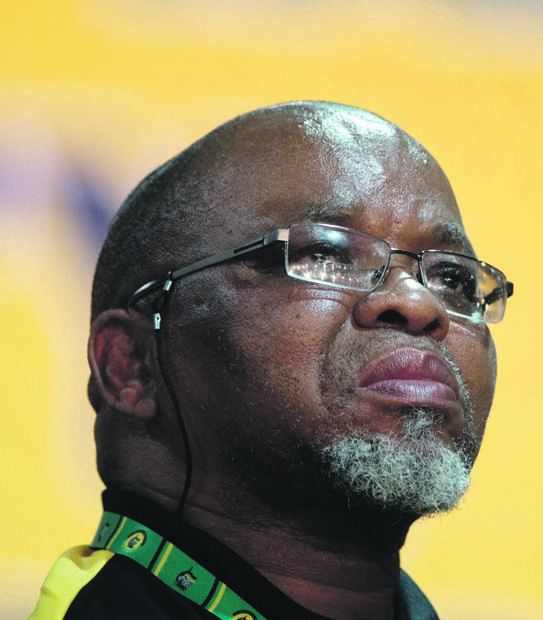
Among the first priorities when Minister Gwede Mantashe was appointed to the mineral resources department was to resolve the challenge of regulatory certainty – and begin the process of rebuilding relationships based on mutual respect with our social partners and critical stakeholders.
The finalisation of the mining charter, which had been an issue of debate in the public domain for more than two years, was a key item on his priority list.
Seven months ago the industry began this work, with an unequivocal mandate for establishing a robust transformative regulatory framework to, inter alia, provide for long-term investor certainty.
This certainty constitutes an essential precursor to boost much-needed investment for resuscitation of exploration, growth of the mining industry, expansion of the economy, sustainable employment, and optimal community and related benefits.
In essence, the industry was on a quest to find a precarious balance of long-term regulatory certainty that delivers mining industry growth, and shared value for investors, communities and workers alike.
A task team was duly constituted, with key social partner representation spanning the government (mineral resources department), organised business (the Minerals Council SA and SA Mining Development Association and organised labour, the Association of Mineworkers and Construction Union, the National Union of Mineworkers, Solidarity, and Uasa).
Simultaneously, the minister led the department in community consultations across the country.
The initial product of the task team culminated in a mining charter summit convened on June 7 and 8 this year to allow a vigorous and expanded consultation.
At the request of participants at the summit, Mantashe extended the window of public submissions on the draft charter by a further month, postponing the summit and demonstrating a commitment to meaningful consultation.
In total the task team received 126 submissions from wide-ranging stakeholders with substantive content, which affirmed the inherent private-public interest in firming up the charter to achieve the stated mandate.
Having processed all the substantive content with due consideration of the mandate, the charter was reviewed by a drafting team of the department and processed through the relevant government processes and, ultimately, the Cabinet.
This culminated in the final gazetting of the mining charter on September 26.
The charter repeals all previous charters as established in terms of section 100 of the Mineral and Petroleum Resources Development Act No 100 of 2002.
In this regard, the power entrusted to the minister to develop the mining charter inherently provided for an amendment of the instrument to ensure that it remained current, its efficacy sharpened and it was responsive to the ever-changing times.
The finalisation of the mining charter formed a key part of the economic stimulus package pronounced by President Cyril Ramaphosa. It seeks to, among other things, provide for regulatory certainty, protect the sanctity of investment, substantially grow the economy, and attract a targeted investment of more than R1.4 trillion in the next five years.
In an effort to provide policy and regulatory certainty, a differentiated approach was adopted on the ownership element to take into full account the varying circumstances of an existing mining right holder, pending applications and new mining rights.
The charter recognises an existing mining right holder who has achieved a minimum of 26% BEE shareholding for the duration of the mining right – not the life of the mine.
However, this recognition is not applicable upon renewal and is not transferable to a new owner in the case of a transfer or sale.
A BEE shareholder exiting the transaction must have held the empowerment shares for a minimum period equivalent to a third of the value created at the point of exit.
Furthermore, pending applications lodged and accepted prior to the commencement of the mining charter shall be processed with a minimum of 26% BEE shareholding, but are required to augment it to 30% within five years.
A new mining right granted after the charter came into effect includes investors having a minimum of 30% BEE shareholding distributed as follows: 5% non-transferable carried interest at no cost to qualifying employees; 5% non-transferable carried interest at no cost to host communities – comprising 5% of the equivalent of the issued share capital of the mining right holder or similar vehicle set up for the benefit of all host communities; and 20% for black entrepreneurs of which a minimum 5% must preferably be for women.
The conditions of the ownership element of the charter apply for the duration of the mining right issued in terms of the Mineral and Petroleum Resources Development Act or licence granted in terms of the Precious Metals Act and the Diamond Amendment Act.
In addition, a separate dispensation for junior miners was created, in support of this growing sector that constitutes the fulcrum of the industry’s future.
Further, it must be clarified that the mining charter does not apply to the prospecting right and mining permit holders.
The charter stipulates that a mining right holder must contribute meaningfully towards the mine’s community development, with a bias towards mine communities, both in terms of effect and size, and in keeping with the principles of the social licence to operate.
The procurement of South African manufactured goods and services provides opportunities to boost the competitiveness of the mining industry significantly through proximal location of markets, catalysing economic growth, creating decent jobs and widening market access to the country’s goods and services.
To confirm local content, the charter requires that goods be procured in line with a standardised product identification coding system, which is currently being developed by the trade and industry department.
On human resource development, the charter is specific in its demand that a mining right holder is expected to invest a minimum of 5% of leviable amounts on essential skills development.
This includes science, technology, engineering and mathematical skills, as well as graduate training programmes and research and development initiatives.
This constitutes an integral part of the mining industry’s competitiveness, transformation and sustainable growth.
In an effort to address the injustices of the past and to achieve workplace diversity, the charter requires a mining right holder to meet the minimum threshold of historically disadvantaged people that reflects the provincial and national demographics at board, executive, senior, middle and junior management, as well as employees with disabilities.
The charter further stipulates that a mining right holder is required to submit a housing and living conditions plan, to be approved by the department of mineral resources, after consultation with organised labour and the department of human settlements.
In terms of the mining charter scorecard, the elements of ownership and mine community development are ring-fenced, which means that these require “absolute compliance” at all times.
The remainder of elements are weighted and streamlined to the trade and industry department’s code status of compliance ranking mechanism.
The industry is of the firm view that the charter we gazetted – while we may not have 100% agreement on each element from all the stakeholders we consulted – is a consensus document we can all live with.
Mabuza writes in his capacity as the chairperson of the mining charter task team and the drafting team of the mineral resources department. He is also CEO of the Council for Geoscience




 Publications
Publications
 Partners
Partners








